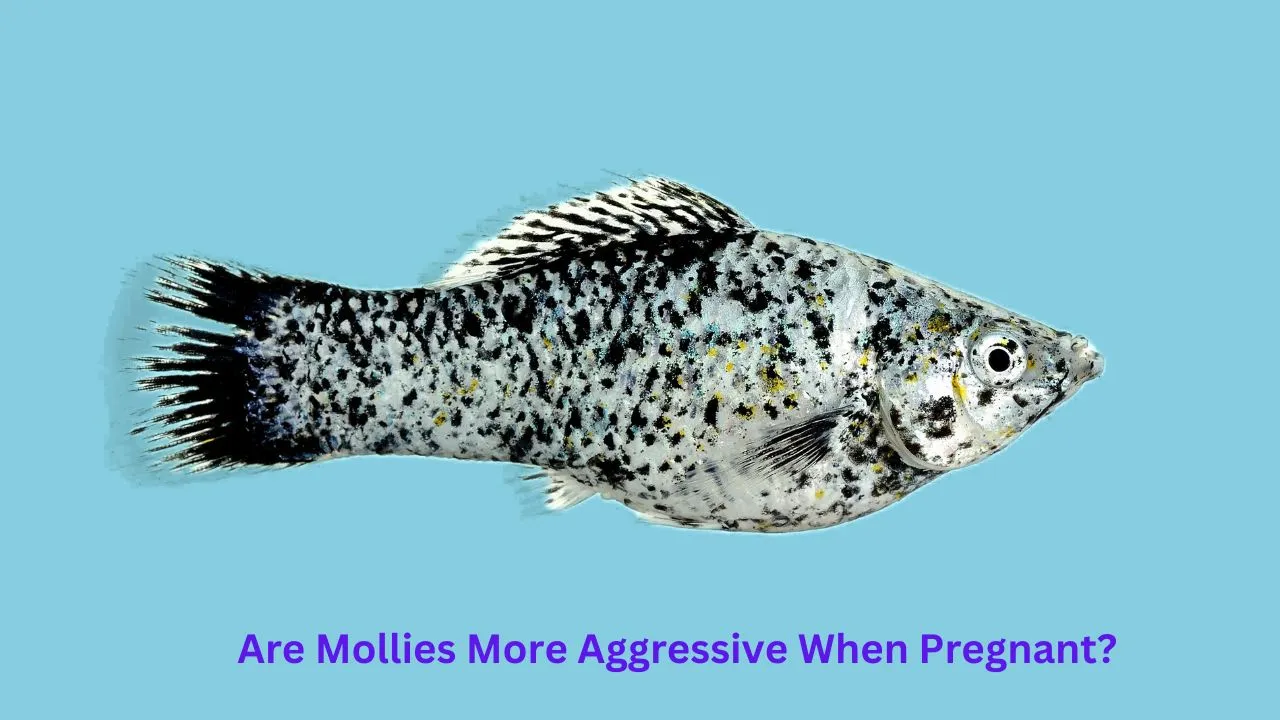When it comes to keeping molly fish (Poecilia sphenops) in aquariums, One common question that arises is are molly fish aggressive. Understanding their temperament is crucial for creating a harmonious environment. Let’s explore the temperament of molly fish, are molly fish aggressive in nature and gain insights into their behavior in aquarium settings.
Are Molly Fish Aggressive To Other Fish?
Mollies are generally peaceful community fish. However, in some situation it is common to notice molly fish aggression, especially during spawning. Nipping of fins and territorial behavior is not uncommon among mollies when they feel stressed or when establishing dominance. Tank size plays a big role – overcrowded tanks often lead to heightened aggression in mollies. Having plenty of hiding places and broken sight lines with plants and decor helps curb aggressive behaviors. Overall, mollies may show some aggression but they are not usually highly aggressive by nature.
What Causes Molly Fish Aggression?
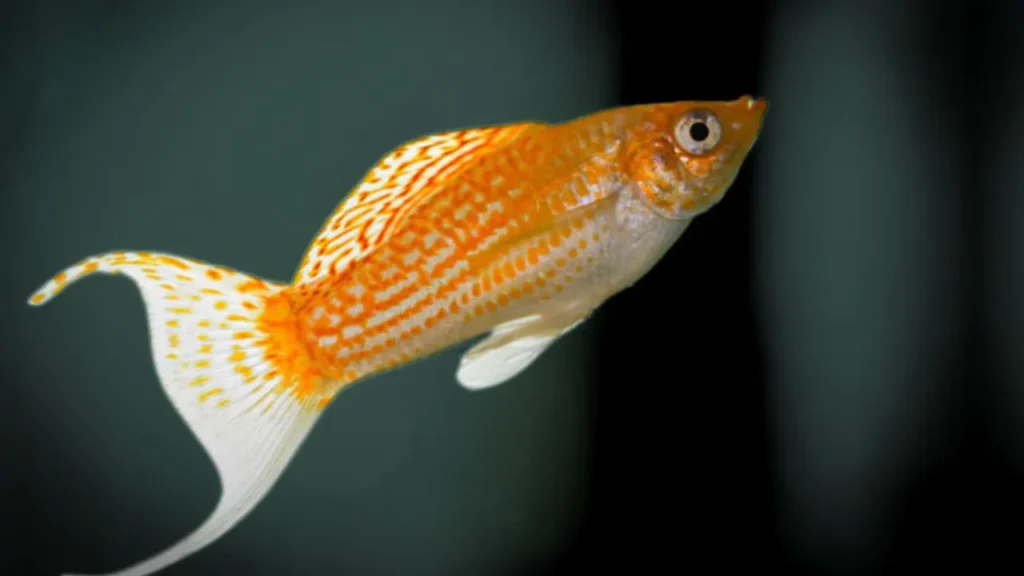
There are a few key factors that can trigger molly fish aggression:
- Stress – Molly fish aggression often arises from stress. Poor water quality, inadequate tank space, or unsuitable tank mates can stress mollies and cause them to become nippy and territorial.
- Overcrowding – Too many mollies in a tank increases competition for resources like food, space and mating partners. This contributes to aggression as they compete and try to establish dominance.
- Breeding Competition – Male mollies competing for female mates may fight and chase each other aggressively, especially in a limited space.
- Mating Behavior – Molly fish are viviparous and engage in complex courtship and mating behaviors. During the mating season, males may become more territorial and aggressive towards other fish, especially other males competing for the attention of females. It is essential to provide ample space and multiple females to minimize aggression caused by mating competition.
- Gender Imbalance – An imbalance in the male-to-female ratio within the aquarium can lead to increased aggression. A higher number of males compared to females may result in intense competition, escalating aggression between the males. Maintaining a balanced gender ratio is crucial for reducing aggression in molly fish.
- Hunger or Food Competition – Food scarcity and competition can also lead to aggression in molly fish. Ensuring an adequate food supply and spreading the feeding areas within the aquarium can help reduce aggression caused by food disputes.
- Protecting Fry – Pregnant mollies become territorial and aggressive before and after giving birth to fry. Their mothering instinct kicks in!
- Environmental Factors – The physical environment of the aquarium can also influence in molly fish aggressive nature. Factors such as insufficient space, lack of hiding spots, poor water quality, and overcrowding can cause stress and trigger aggressive behavior. Providing a spacious and well-maintained aquarium with appropriate conditions can help minimize aggression.
- Social Hierarchy – Molly fish, like many other species, establish social hierarchies within their groups. Dominant individuals may display aggression towards subordinate fish, establishing and maintaining their position within the hierarchy. A balanced social structure and compatibility among tankmates can contribute to a more peaceful environment.
Are Molly Fish Bullies?
In some cases, yes, certain species of molly fish bullies in an aquarium environment. Sailfin mollies in particular are known for bossing around tank mates through chasing, fin nipping and generally monopolizing prime feeding areas and resources due to dominance issues. Oftentimes this molly bullying arises when the tank is too small and crowded. Reducing aggression through proper molly species selection, an adequately sized tank, and breaking up sight lines helps minimize any bully behavior. While mollies are not the most aggressive fish out there, their bullying tendencies should be kept in mind.
Understanding Molly Fish Aggression
Molly fish aggression can be a complex behavior to comprehend, but by understanding the factors that contribute to aggressive behavior in these fish, aquarists can create a harmonious aquarium environment. Aggression in molly fish can be influenced by various factors, including territoriality, social hierarchy, and reproductive behavior.
When it comes to territoriality, molly fish can be particularly protective of their space. Male molly fish, in particular, may demonstrate aggressive behavior towards other males when vying for dominance or defending their territory. This territorial aggression is often displayed through chasing, fin-nipping, and even physical confrontation.
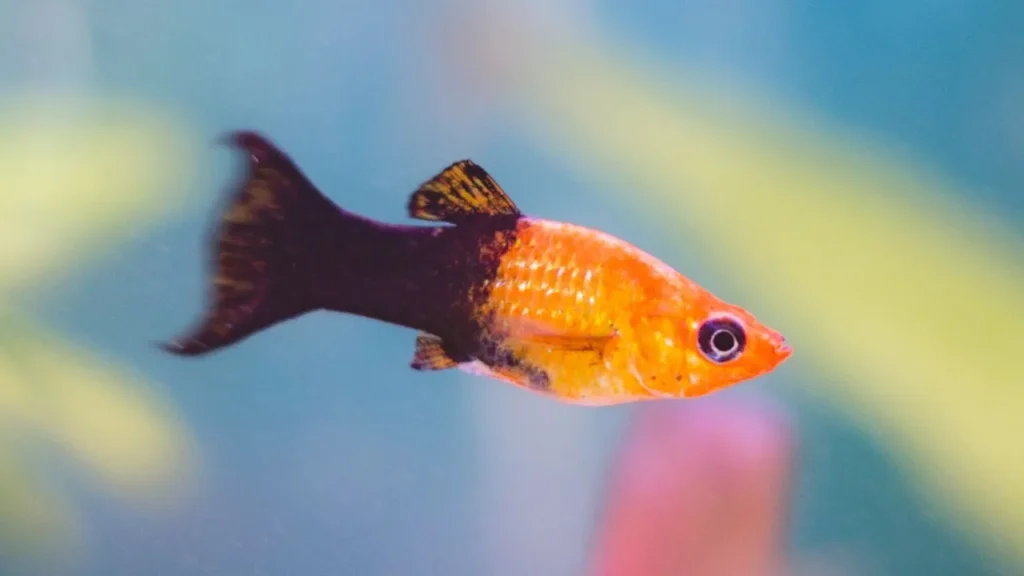
Social hierarchy also plays a role in molly fish aggression. In a group of molly fish, a pecking order can be established where dominant individuals exert their authority over subordinate fish. This hierarchical aggression may lead to the exclusion or harassment of weaker or less dominant molly fish.
“Understanding molly fish aggression can help aquarists create a harmonious aquarium environment.”
Reproductive behavior can also contribute to aggression in molly fish, especially during mating. Male molly fish may display aggressive behavior towards females in their attempts to mate. This can include chasing and nipping at the female’s fins, as well as aggressive courtship displays. It’s important to create a well-balanced gender ratio in the aquarium to minimize the likelihood of excessive aggression during mating periods.
Additionally, environmental factors such as overcrowding, inadequate hiding spots, and insufficiently sized tanks can also exacerbate aggression in molly fish. Providing plenty of hiding places, such as plants and caves, can help reduce aggression by giving fish a sense of security and territory.
By understanding the various factors that contribute to aggressive behavior in molly fish, aquarists can take proactive steps to manage and minimize aggression. This includes creating a suitable tank environment, monitoring the social dynamics within the aquarium, and ensuring a balanced gender ratio to reduce mating-related aggression.
Aggression and Gender Differences in Molly Fish
Gender difference also plays a crucial role in angelfish aggression.
Are Mollies Aggressive When Pregnant?
Are mollies aggressive when pregnant or nursing fry, Yes The gravid female molly needs to find a suitable and safe spot to give birth in the tank. She may become territorial and chase away tank mates that invade her space as she seeks out spots to deliver her fry. After giving birth, maternal molly fish aggression continues as the mother molly protects her young from potential predators. Providing plenty of dense planting, rock caves and driftwood helps mitigate this aggression by giving the mother molly safe spaces away from others. The more room and hiding places, the less nippy a pregnant molly will be.
Guide To Molly Fish Pregnancy Cycle.
Males vs. Females: Which Molly Fish Aggressive More?
When it comes to molly fish aggression, gender plays a prominent role. In many cases, male molly fish tend to be more aggressive than their female counterparts. This heightened aggression is often driven by territoriality, as male molly fish fiercely guard their territory, especially during breeding seasons. Their aggressive behavior is a means of protecting their mates and offspring.
On the other hand, female molly fish typically exhibit less aggressive behavior. They tend to be more peaceful and accommodating towards tankmates, focusing primarily on nurturing their young. However, it’s important to note that individual personalities can vary, and there may be exceptions to this general trend.
Implications for Aquarium Management
Understanding the gender differences in aggression among molly fish is crucial for managing their behavior in an aquarium setting. Here are some key implications:
- Tank Size and Territory: Providing ample space and hiding spots within the aquarium can help alleviate aggression. Male molly fish, in particular, require enough territory to establish their dominance.
- Female-Friendly Tankmates: When choosing tankmates for your molly fish, opt for peaceful species that won’t provoke aggression in females. This can help create a more harmonious community tank.
- Removing Aggressive Individuals: If a particular molly fish displays excessive aggression, consider removing it from the tank to prevent harm to other tankmates. Quarantining the aggressive fish temporarily may also help reduce aggression.
By taking these measures and understanding the gender-specific behaviors of molly fish, aquarists can successfully manage aggression and create a thriving and peaceful aquarium environment.
Managing Molly Fish Aggression.
Aggression can be a concern when keeping molly fish in an aquarium. However, with proper strategies and techniques, it is possible to manage aggression and create a peaceful environment for your fish. Here are some effective methods for managing molly fish aggression:
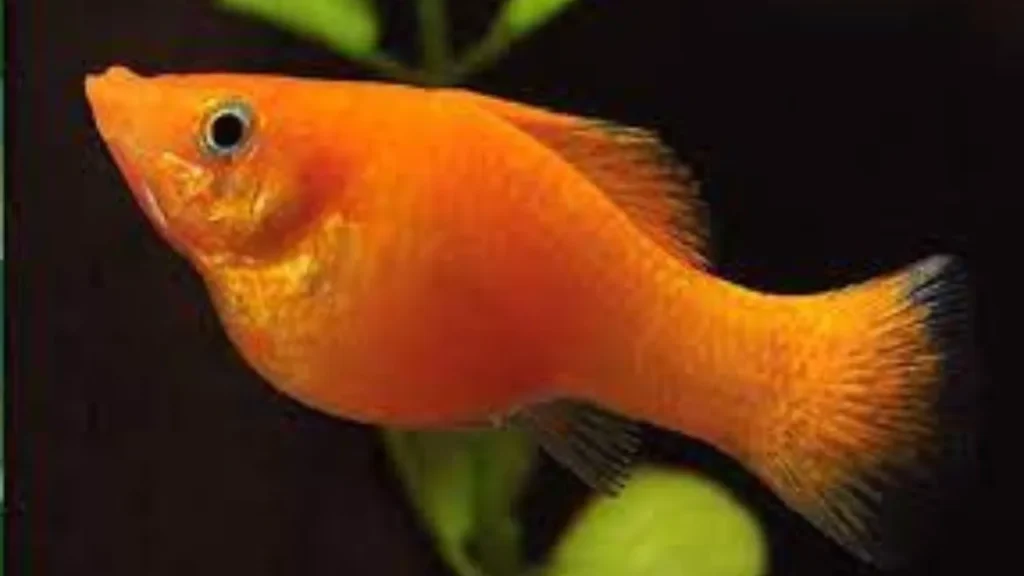
1. Tank Setup
The proper tank setup plays a crucial role in managing aggression in molly fish. Consider the following factors:
- Provide ample hiding places: Adding rocks, driftwood, or live plants to your aquarium will create hiding spots that can help reduce aggression by giving molly fish a place to retreat.
- Ensure sufficient space: Overcrowding can lead to heightened aggression. Make sure your tank is adequately sized with plenty of room for each fish.
- Separate aggressive individuals: If you notice specific molly fish displaying excessive aggression, consider temporarily separating them from the rest of the tank to prevent harm to other fish.
2. Balanced Diet
A balanced diet is essential for the overall health and well-being of molly fish. Providing high-quality food can help reduce aggression. Ensure that the diet includes:
- Varied and nutritious food: Offer a mix of flake food, freeze-dried or live food, and vegetables to meet the nutritional needs of your molly fish.
- Avoid overfeeding: Overfeeding can lead to territoriality and aggression. Offer the appropriate amount of food for your fish and remove any uneaten food promptly.
3. Environmental Enrichment
Enriching the aquarium environment can help reduce stress and decrease aggression levels. Consider the following:
- Adequate lighting: Provide proper lighting conditions to mimic a natural day-night cycle, promoting a sense of security for your molly fish.
- Add visual barriers: Use decorations, plants, or artificial structures to create visual barriers within the tank, helping to break lines of sight and reduce aggression.
- Keep water parameters stable: Frequent water changes and maintaining stable water conditions will help keep your molly fish healthy and minimize stress that can lead to aggression.
By implementing these strategies, you can effectively manage aggression in molly fish and ensure a peaceful and harmonious aquarium environment for your aquatic companions.
Also Read: How To Tell If Your Molly Fish Is Dying
| Method | Description |
|---|---|
| Tank Setup | Provide hiding places, sufficient space, and separate aggressive individuals. |
| Social Dynamics | Observe the hierarchy, introduce fish gradually, and monitor compatibility. |
| Balanced Diet | Offer varied and nutritious food, avoid overfeeding. |
| Environmental Enrichment | Ensure adequate lighting, add visual barriers, and maintain stable water parameters. |
Peaceful Tankmates for Molly Fish
When it comes to creating a harmonious aquarium environment, choosing the right tankmates for your molly fish is crucial. By selecting compatible fish species, you can minimize the risk of aggression and ensure a peaceful coexistence among your aquatic companions. Here, we provide a list of peaceful tankmates that are known to get along well with molly fish.
1. Platies
A popular choice for community aquariums, platies are peaceful fish that can coexist harmoniously with molly fish. They share similar water parameter requirements and have a calm temperament, making them ideal companions for mollies.
2. Guppies
Guppies are small, colorful fish known for their peaceful nature. They are compatible with molly fish and can add vibrant colors to your aquarium. Guppies prefer similar water conditions and dietary requirements, making them a great match for mollies.
3. Swordtails
Swordtails are another peaceful fish that can thrive alongside molly fish. They are known for their beautiful sword-like tails and come in various colors. Swordtails have a similar temperament and water parameter preferences as mollies, making them compatible tankmates.
4. Neon Tetras
Neon tetras are small, schooling fish that are peaceful and non-aggressive. They can bring a lively presence to your aquarium, with their vibrant colors and graceful swimming. Neon tetras’ calm disposition makes them excellent companions for molly fish.
5. Corydoras Catfish
Corydoras catfish are bottom-dwelling fish that are known for their peaceful nature. They help keep the tank clean by scavenging for food particles, making them beneficial tankmates for molly fish. These catfish have compatible water requirements and provide a fascinating addition to your aquarium.
6. Cherry Barbs
Cherry barbs are peaceful, active fish that can coexist well with molly fish. They have vibrant red coloration and make an excellent addition to a community tank. Cherry barbs have a calm temperament, making them suitable tankmates for mollies.
7. Danios
Danios are active, schooling fish that can bring energy and movement to your aquarium. They are peaceful and get along well with molly fish. Danios prefer similar water conditions, making them compatible tankmates for mollies.
Remember, even though these fish species are known to be peaceful, it is essential to monitor their behavior and consider the specific needs of your aquarium. Providing adequate hiding places and ensuring proper tank size can contribute to a harmonious environment for all your aquatic friends.
Observing and Addressing Aggressive Behavior
When it comes to molly fish, it is important to be vigilant and observant of their behavior. By understanding the signs of molly fish aggression, you can take appropriate steps to address any issues that may arise in your aquarium.
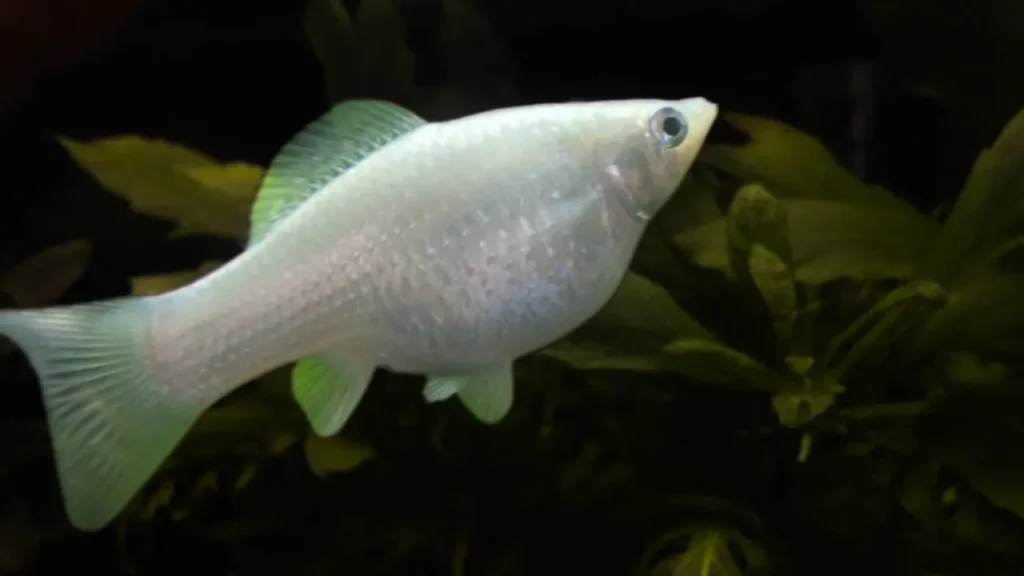
Identifying Signs of Aggression
Molly fish aggression can manifest in various ways. It is crucial to be able to identify the signs of aggression early on to prevent any harm to other tank mates. Some common signs of aggression in molly fish include:
- Chasing or nipping at other fish
- Territorial behavior, such as guarding a specific area of the tank
- Flaring fins and displaying dominant body language
- Aggressive displays during feeding time
- Bullying and intimidating other fish
By carefully observing these behaviors, you can assess the level of aggression displayed by your molly fish.
Addressing Aggression in Molly Fish
If you notice aggressive behavior in your molly fish, it is important to take appropriate action to maintain harmony in your aquarium. Here are some steps you can take to address aggression:
- Separate aggressive individuals: If a specific molly fish is consistently aggressive, consider isolating it in a separate tank to reduce the likelihood of harm to other fish.
- Reevaluate tank setup: Ensure that your aquarium provides enough space and hiding spots for each fish to establish their territory and retreat from aggression if needed.
- Introduce compatible tankmates: Adding peaceful tankmates that can coexist with molly fish can help alleviate aggression. Choosing species that have similar temperaments and are not prone to territorial behavior can create a more harmonious environment.
- Rearrange tank decorations: Rearranging the layout of your aquarium can help disrupt established territories and reduce aggression.
- Monitor feeding time: If aggression occurs during feeding, consider using multiple feeding areas to prevent competition and decrease hostility.
By implementing these strategies, you can address aggression in your molly fish and maintain a peaceful aquarium environment.
You May Like: How To Reduce Angelfish Aggression?
Tips for Addressing Aggressive Behavior
To summarize, observing molly fish aggression is crucial for maintaining a harmonious tank. By identifying signs of aggression and taking appropriate steps to address it, you can ensure the well-being of all your aquarium inhabitants. Remember to monitor your fish regularly, provide a suitable environment, and introduce compatible tankmates to discourage aggression. By fostering a peaceful atmosphere, you can enjoy the beauty and grace of your molly fish without the disturbance of aggression.
Verdict On Are Molly Fish Aggressive?
In conclusion, Are molly fish aggressive? not in general but it depends on some situation. It is important for aquarists to understand the temperament in order to determine whether molly fish aggressive or not. While molly fish may have the potential to display aggression, it is not a universally inherent trait. Various factors can contribute to aggression, such as territoriality, mating behavior, and social dynamics within the aquarium.
By considering these factors and implementing appropriate management techniques, aquarists can create a peaceful environment for their molly fish. This includes providing ample space and hiding spots, ensuring a balanced male-to-female ratio, and carefully selecting compatible tankmates. Regular observation of fish behavior and addressing aggression promptly will also help maintain harmony in the aquarium.
Remember, each fish is unique, and behavior can vary among individuals. It is essential to monitor and adjust the aquarium setup as needed to ensure the well-being of the molly fish. By understanding their temperament and providing optimal conditions, aquarists can enjoy a thriving and peaceful community of molly fish in their aquariums.
Reference:
https://www.fishkeepingworld.com/molly-fish/

